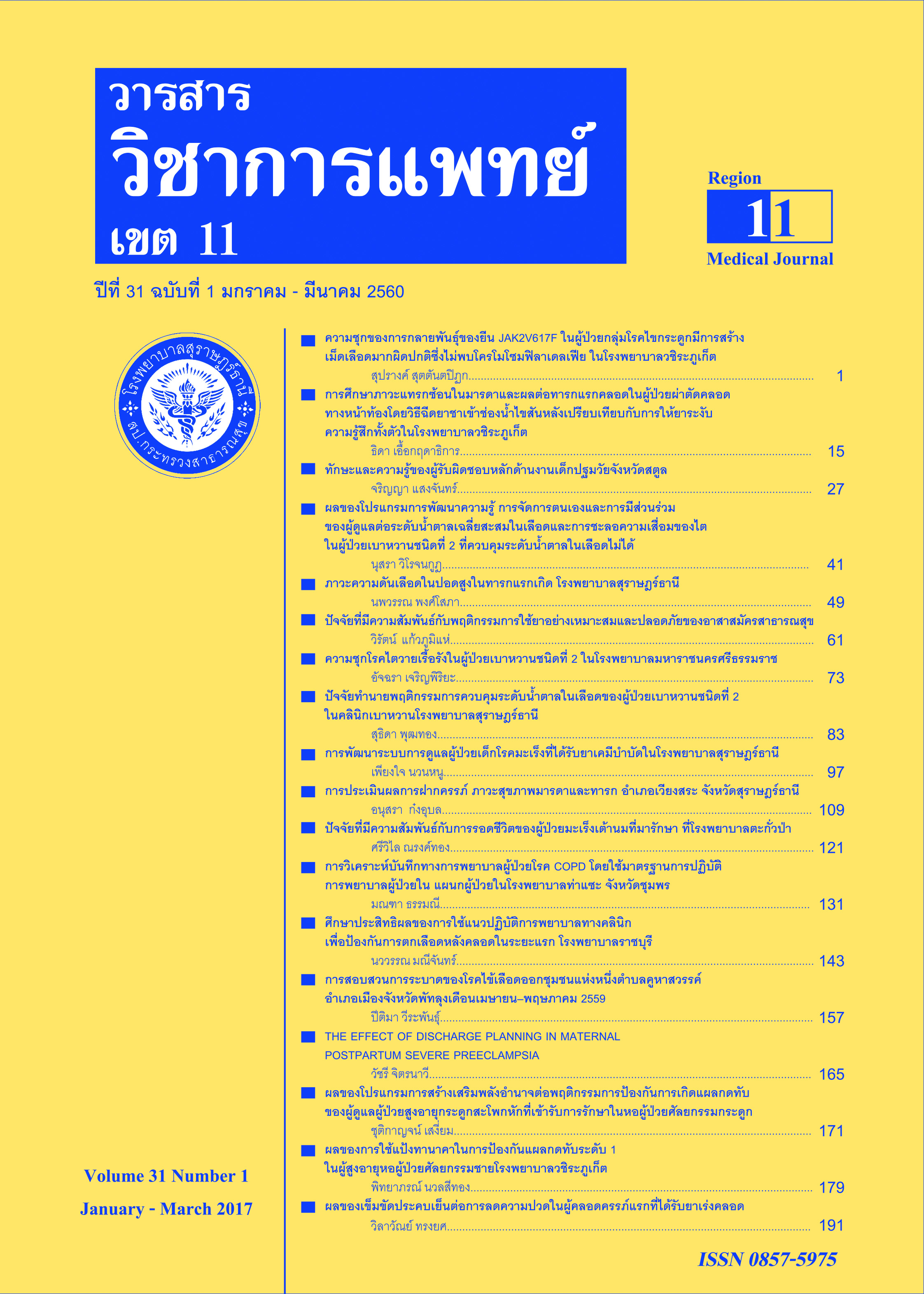The Effect of Cold Belt Compress on Pain Reduction in Primigravidas Receiving Induction of labor
Keywords:
Cold belt compress, Labor pain, Augmentation of labor, PrimigravidasAbstract
Pregnant women who were in labor and received oxytocin intravenous to augment of labor usually had more discomfort and suffering from labor pain, especially primigravidas. Using cold belt compression has been accepted as an effectively methods that can relieve labor pain. This quasi-experimental was aimed to investigate the effects of cold belt compress on labor pain of primigravidas who received augmentation of labor during active phase. Forty subjects were selected according to inclusion criteria. Twenty samples were chosen into an experimental group and participated in cold belt compress protocol. Other twenty subjects in control group received usual nursing care. The research instruments comprised of cold belt protocol, patients’ interview form, and visual analogue scale. Data were analyzed using descriptive statistics, independent t-test, and analysis of covariance.
The findings revealed that the pregnant women who participated in cold belt compress protocol had lower mean pain score than those in the control group (p < .05).
The results of this study showed that using cold belt compress can reduce labor pain, so, nurse midwives should offer cold belt compress protocol as an effective nursing intervention in reducing labor pain in primigravidas who received augmentation of labor during active phase.
References
2. Dick-Read G. Childbirth without fear: The original approach to natural childbirth. New York: Harper & Row Publishers; 1984.
3. ธีระ ทองสง และชเนนทร์ วนาภิรักษ์. สูติศาสตร์. กรุงเทพมหานคร: พี.บี. ฟอเรนบุ๊คส์ ;2541; 672.
4. ณัฏจิรา วินิจฉัย, เยาวลักษณ์ เสรีเสถรีย, ปิยะนันท์ ลิมเรืองรอง, และวรรณา พาหุวัฒนกร. ผลของโปรแกรมการสนับสนุนในระยะคลอดต่อความวิตกกังวลในผู้คลอดครรภ์แรกที่ได้รับการเร่งคลอดด้วยยาออกซิโทซิน. วารสารการพยาบาล ;2556; 28(4): 44-55.
5. McCaffery, M., Beebe, A. Pain : clinical manual for nursing practice. C.V. Mosby, St. Louis ;1985.
6. ศศิธร พุมดวง. การลดปวดโดยไม่ใช้ย่า. สงขลานครินทร์เวชสาร ;2546; 21: 291-300.
7. Melzack, R., & Wall, P. D. Pain mechanisms: A new theory. Science ;1965; 150(699): 971-979.
8. นุชสรา อึ้งอภิธรรม, สุกัญญา ปริสัญญกุล,และนันทพร แสนศิริพันธ์. ผลของการประคบเย็นและการประคบร้อนต่อความเจ็บปวดในการคลอดของผู้คลอดครั้งแรก.พยาบาลสาร ;2555; 39: 46-58.
9. เจือกุล อโนธารมณ์. การบรรเทาปวดโดยไม่ใช้ยา. วารสารพยาบาล ;2546; 52(2): 73-83.






